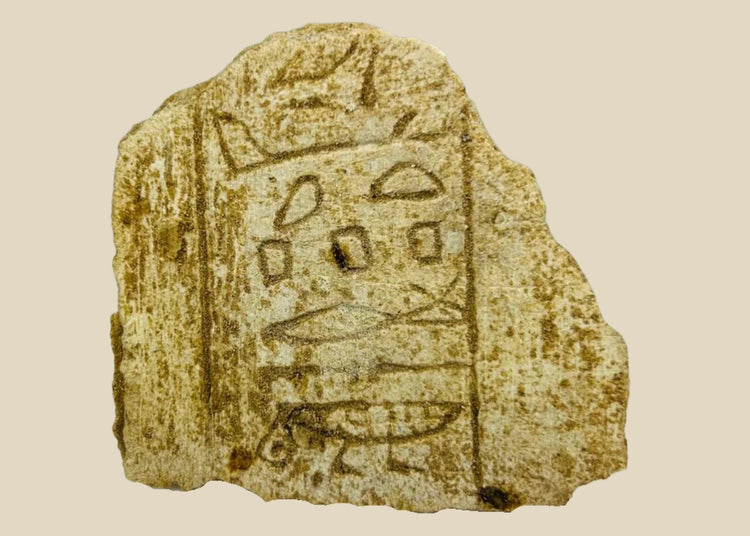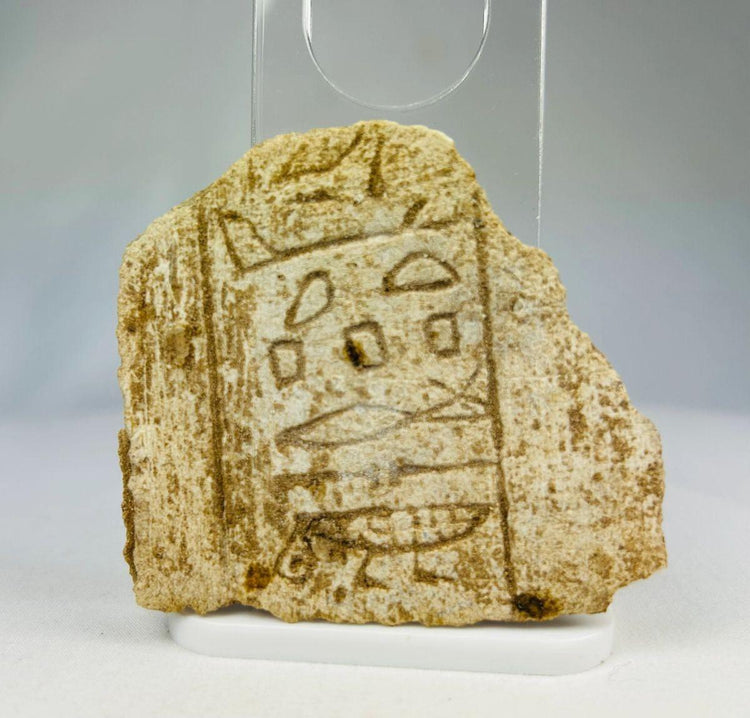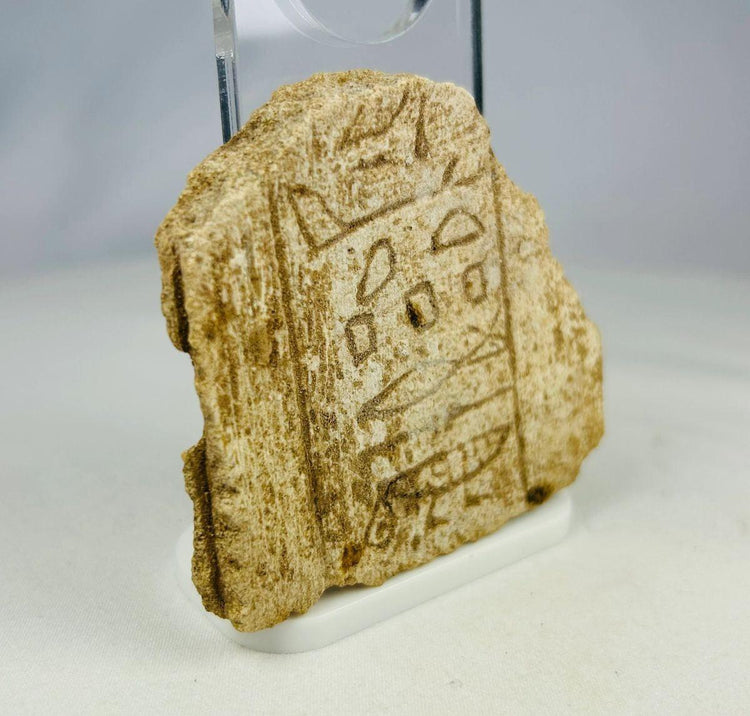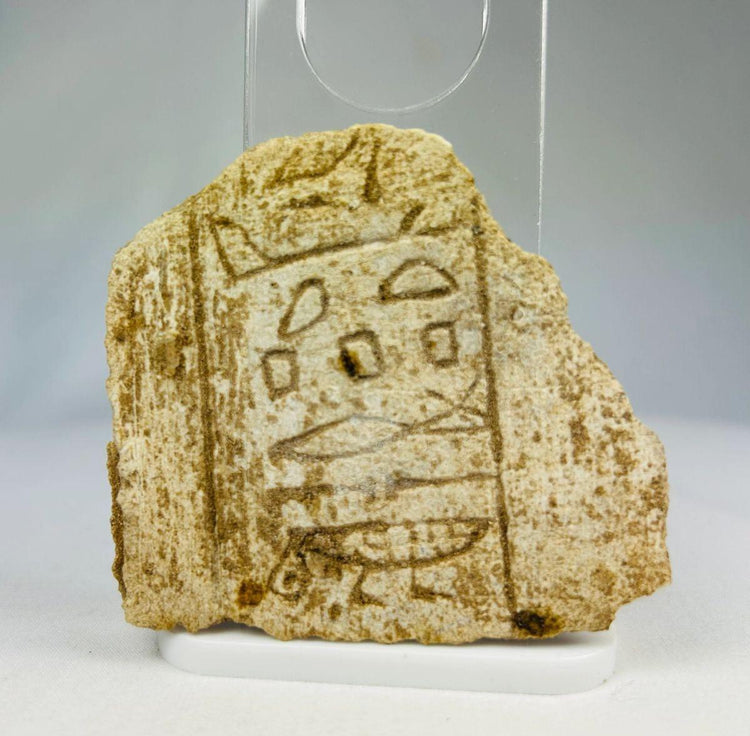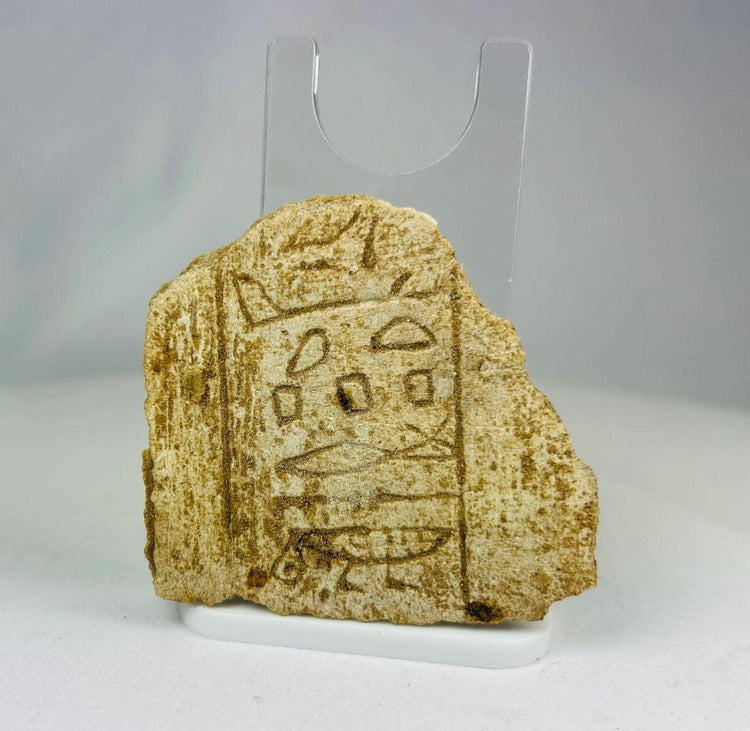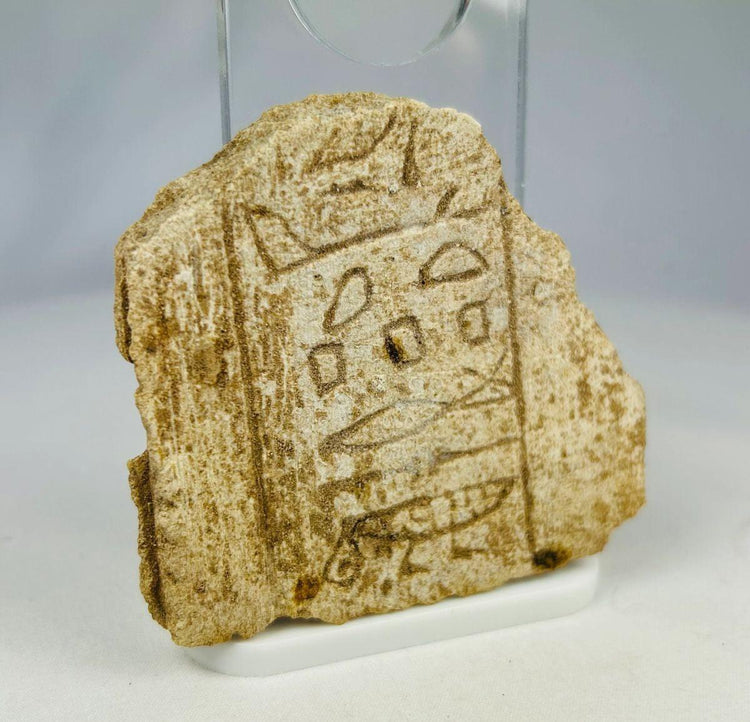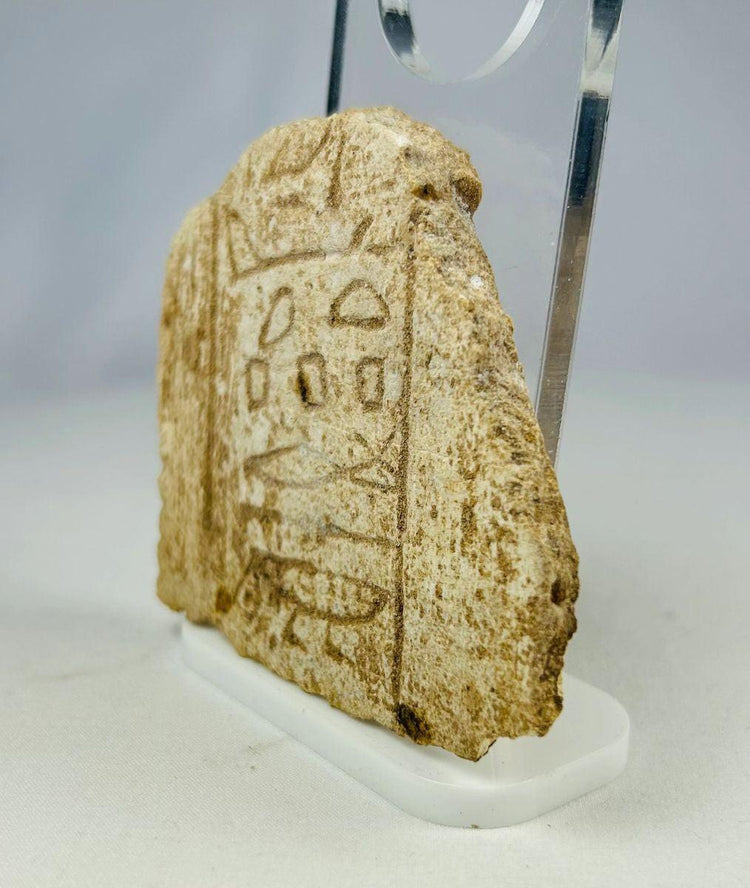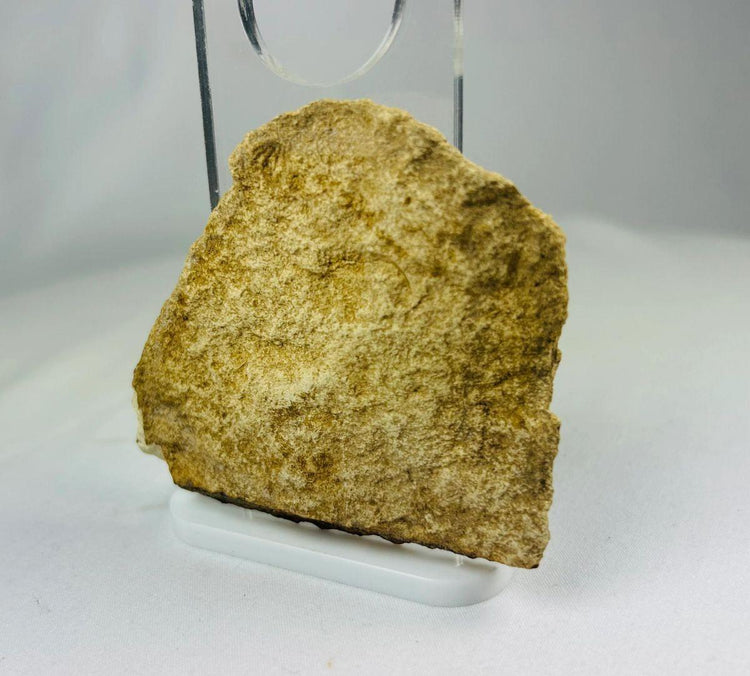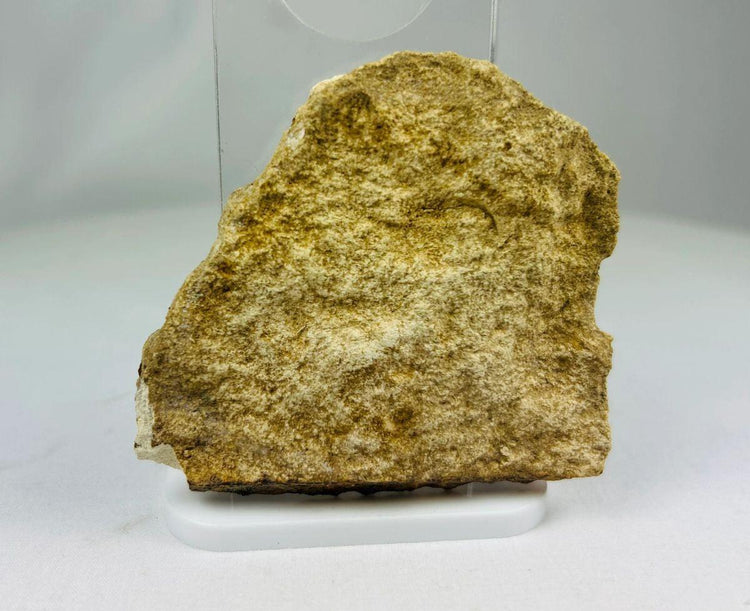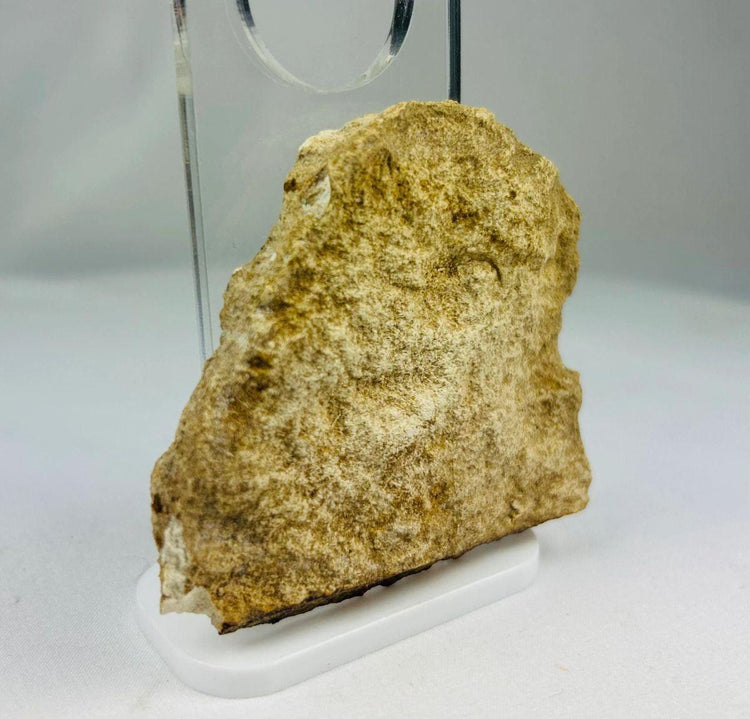Egyptian Carved Limestone | Hieroglyphic Fragment from Tomb or Stela | 7th Century BCE
Description
More
Less
Historical Context & Origin
Region: Egypt
Material: Hand-carved limestone with hieroglyphic inscriptions
Period: Late Period, circa 700 BCE
Description
This is an ancient carved limestone fragment inscribed with hieroglyphics from Egypt’s Late Period, a time noted for its revival of classical artistic and cultural traditions. The fragment preserves clear hieroglyphic symbols, including the loaf (t), water ripple (n), and eye motif, framed within vertical registers that were typical of offering texts, stelae, or tomb inscriptions. Though part of a larger composition, the deliberate and deeply incised carvings reflect the precision and religious devotion of Late Period artisans. The surface shows a naturally aged patina and mineral encrustations, consistent with long-term burial and desert exposure. Mounted on a modern display base, it is presented securely for study and exhibition.
Features
- Hand-carved limestone fragment with hieroglyphic inscriptions
- Vertical register formatting typical of stelae and tomb texts
- Clear incised symbols including loaf, water ripple, and eye motif
- Warm sandy coloration with mineral deposits
- Mounted on modern base for display
Cultural Significance
Hieroglyphic inscriptions were considered sacred, serving both religious and magical purposes in Egyptian society. They were believed to protect the deceased, honor the gods, and ensure a successful passage into the afterlife. Fragments such as this provide insight into the spiritual and artistic achievements of the Late Period, embodying the enduring legacy of Egyptian religious practice and funerary tradition.
Condition
Surface wear, chips, and erosion consistent with excavated limestone. Hieroglyphs remain legible despite age. Stable overall with authentic patina and no modern repairs.
Dimensions (approximate)
Height: 2.75 in
Age
Approximately 2,700 years old (circa 700 BCE, Late Period)
Description
Historical Context & Origin
Region: Egypt
Material: Hand-carved limestone with hieroglyphic inscriptions
Period: Late Period, circa 700 BCE
Description
This is an ancient carved limestone fragment inscribed with hieroglyphics from Egypt’s Late Period, a time noted for its revival of classical artistic and cultural traditions. The fragment preserves clear hieroglyphic symbols, including the loaf (t), water ripple (n), and eye motif, framed within vertical registers that were typical of offering texts, stelae, or tomb inscriptions. Though part of a larger composition, the deliberate and deeply incised carvings reflect the precision and religious devotion of Late Period artisans. The surface shows a naturally aged patina and mineral encrustations, consistent with long-term burial and desert exposure. Mounted on a modern display base, it is presented securely for study and exhibition.
Features
- Hand-carved limestone fragment with hieroglyphic inscriptions
- Vertical register formatting typical of stelae and tomb texts
- Clear incised symbols including loaf, water ripple, and eye motif
- Warm sandy coloration with mineral deposits
- Mounted on modern base for display
Cultural Significance
Hieroglyphic inscriptions were considered sacred, serving both religious and magical purposes in Egyptian society. They were believed to protect the deceased, honor the gods, and ensure a successful passage into the afterlife. Fragments such as this provide insight into the spiritual and artistic achievements of the Late Period, embodying the enduring legacy of Egyptian religious practice and funerary tradition.
Condition
Surface wear, chips, and erosion consistent with excavated limestone. Hieroglyphs remain legible despite age. Stable overall with authentic patina and no modern repairs.
Dimensions (approximate)
Height: 2.75 in
Age
Approximately 2,700 years old (circa 700 BCE, Late Period)
You May Also Like




























